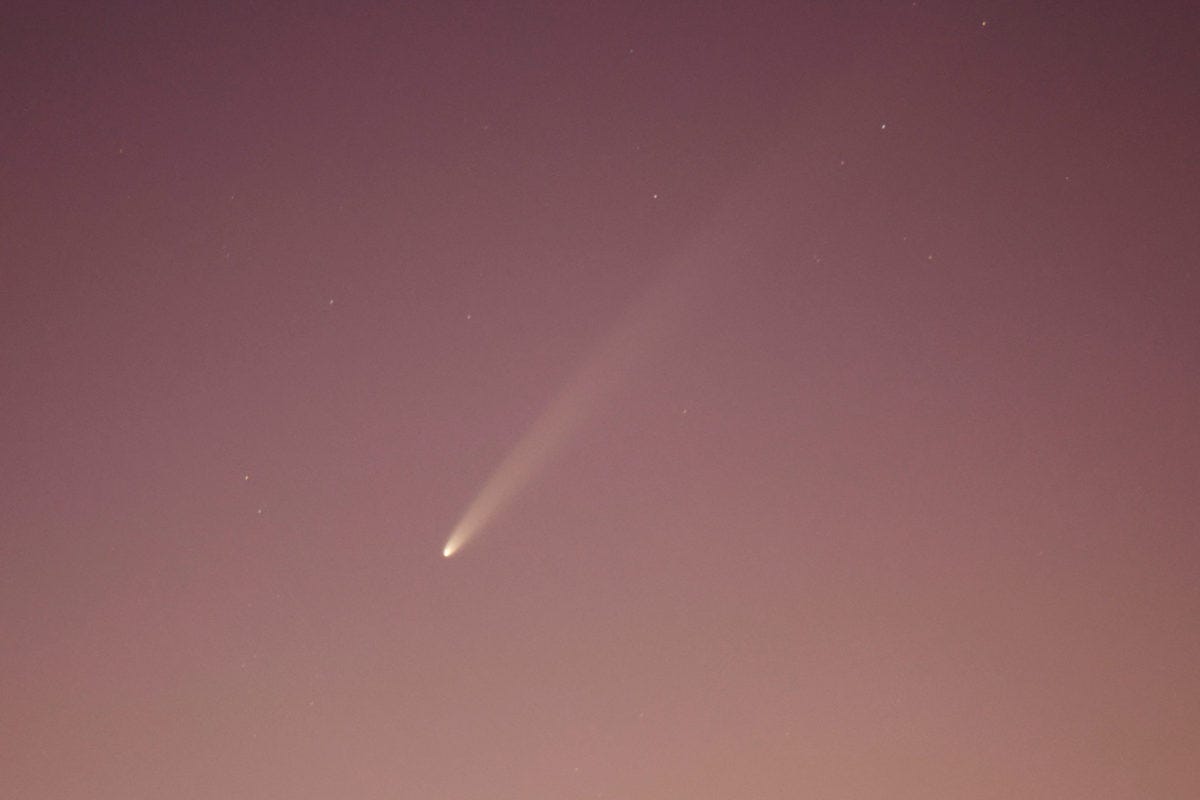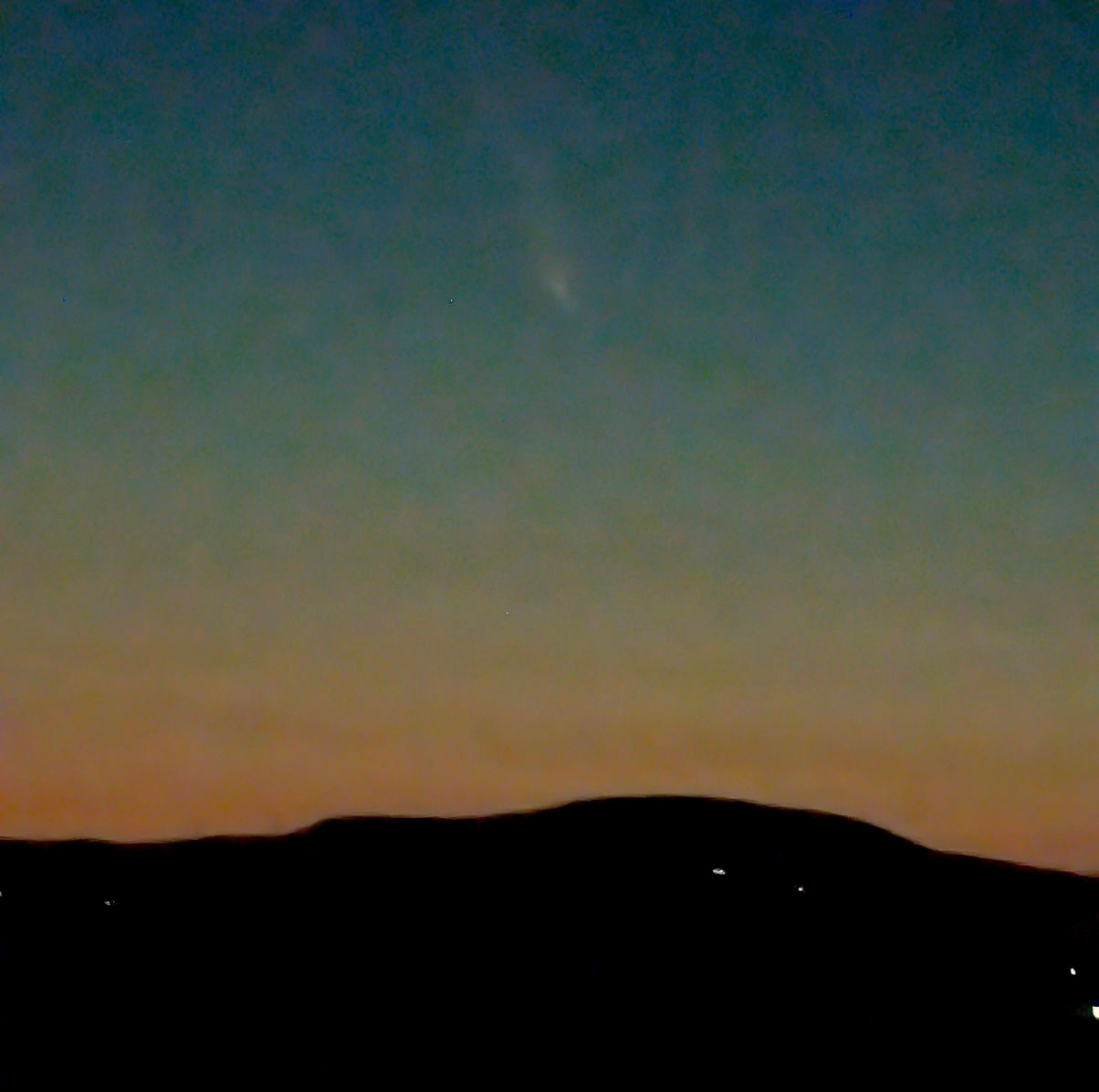Photographed before dawn from Temisas, on the island of Gran Canaria, Spain, Sept. 28, 2024. Photo by Borja Suarez/Reuters
We saw Comet Tsuchinshan–ATLAS last night in Western Massachusetts an hour or so after sunset! You too can see it but you need to be away from bright city lights. We viewed it between Arcturus (to the left of the handle of the Big Dipper) and at the height of bright Venus. You can see it with the naked eye as a smudge, if you know where to look. Of course binoculars were much better. Here’s an amateur photo from a pixel phone.
Photo credit: C.Schnier.
As I’ve stated for over 27 years in my PlanetWeather newsletter, GoOut LookUp which is always recommended to keep you in touch with the mysterious and amazing cosmos above, which gives perspective to our life on Earth. Right now, through 10/25/24 the comet Tsuchinshan–ATLAS will be visible and it’s a twofer, as another comet is right behind it.
Comet Tsuchinsan-ATLAS was discovered by the Purple Mountain Observatory in China on 9 January 2023 and independently found by ATLAS South Africa on 22 February 2023. NASA says it’s the brightest comet of 2024 and has an orbit of 80,000 years. So if you miss it this months you’ll have to wait a bit to see it again! LOL.
It is at its brightest, and likely visible to the naked eye, for a week or two after Oct. 12, the day it’s closest to Earth – just look to the western sky shortly after sunset. As the days pass, the comet will get fainter and move to a higher part of the sky.
The second comet, C/2024 S1 (ATLAS), just discovered on Sept. 27, should be visible around the end of October. The comet will pass closest to Earth on Oct. 24 – look low in the eastern sky just before sunrise. Then, after swinging around the Sun, the comet may reappear in the western night sky right around Halloween. It’s possible, however, that it could disintegrate, in part or in whole, as sometimes happens when comets pass by the Sun – and this one will come within 1 million miles (1.6 million kilometers) of our star.
Both comets are from the far away Oort cloud. The spherical shell known as the Oort Cloud is, for all practical purposes, invisible. Its constituent particles are spread so thinly, and so far from the light of any star, including the Sun, that astronomers simply cannot see the cloud, even though it envelops us like a blanket.
In ancient times, comets were seen as great and powerful omens of major events to come, often associated with leaders and leadership.
I find it interesting to note that comet Tsuchinsan-ATLAS was discovered with the Sun in Capricorn, where Pluto is now making its last stand (I’ll post a short piece about this soon). At the very least it asks us to recognize the perspective of Earth and Cosmos and to look at the bigger picture of what we’re all doing here, rather than our own fragile, selfish egos. It’s reminding us to look forward to the future (several planets in Aquarius, where Pluto goes next) armed with the most important, powerful, consequential and enduring lessons of the past. I truly hope we can manage that effectively for the good of all of humankind.
Stats from Wikipedia and PBS
~~~~~~~~~~~




